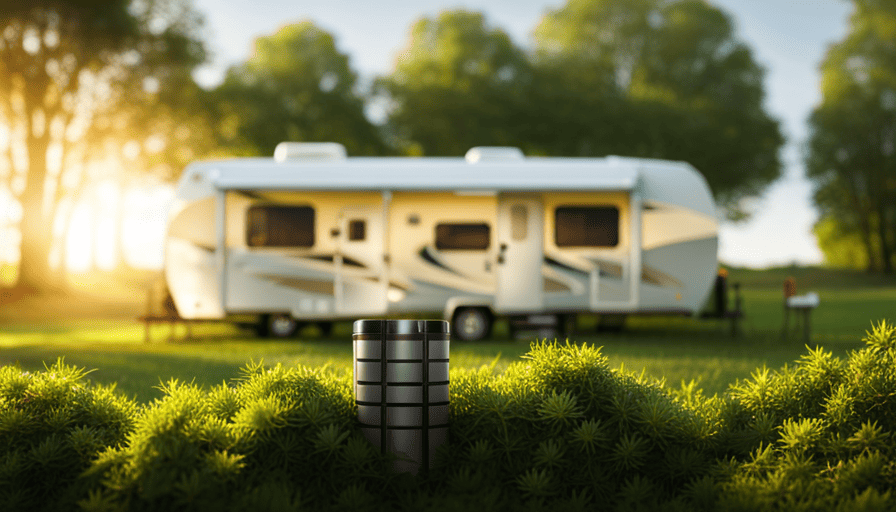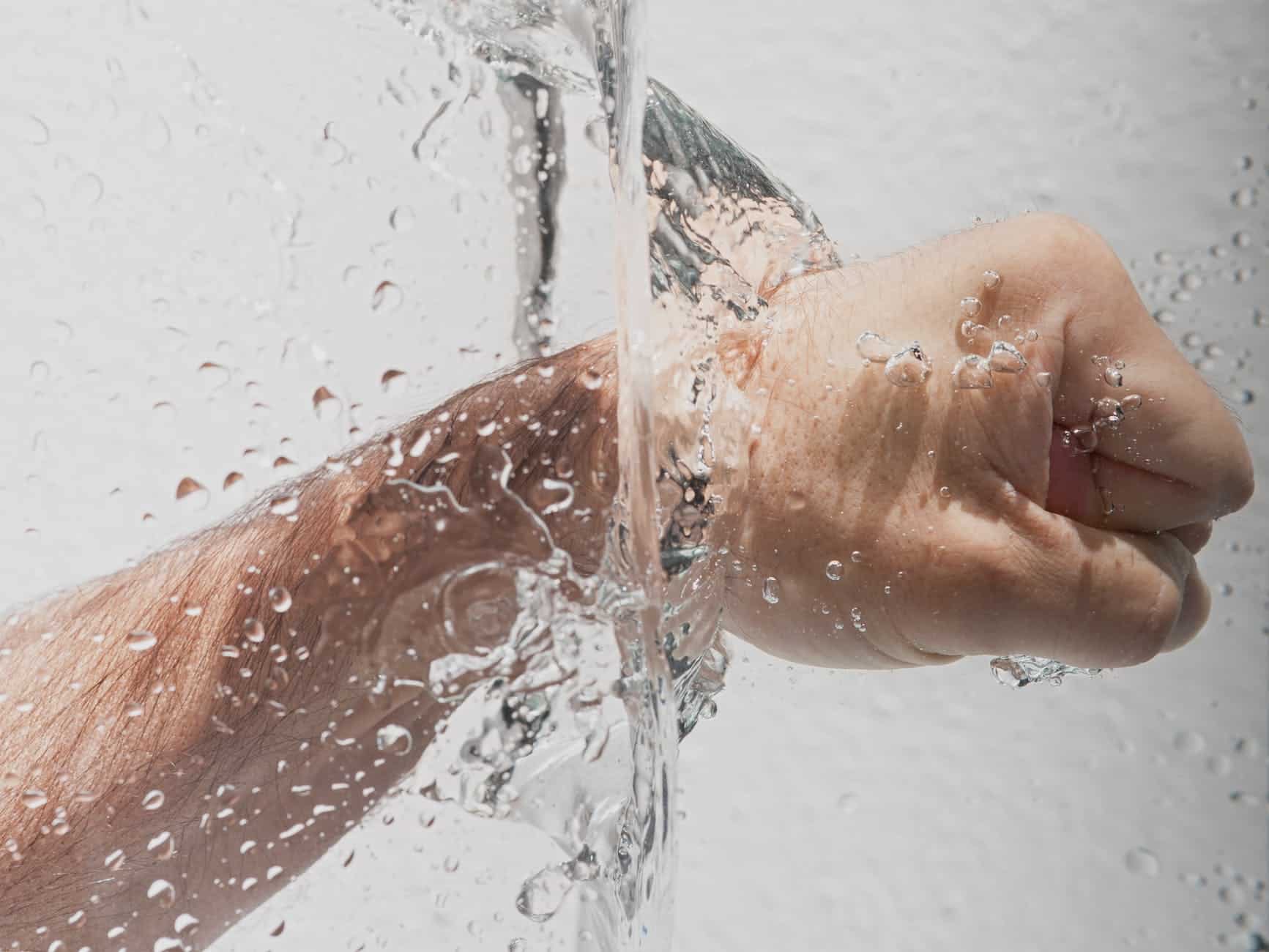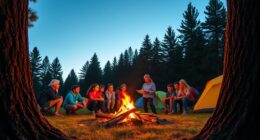Being prepared for emergencies is crucial to ensuring the safety and welfare of yourself and your loved ones in times of crisis. This detailed guide will equip you with the necessary skills, tools, and advice to excel in emergency preparedness. Neglecting preparation can lead to serious consequences, so it is vital to prioritize emergency planning and response. Whether you are just beginning your preparedness journey or have already made some progress, this guide will assist you in improving your preparedness efforts in 2023 and beyond.
Key Takeaways:
- Emergency preparedness is crucial for the safety and well-being of yourself and your loved ones.
- Prioritize emergency planning and response to minimize the impact of crises.
- Enhance your preparedness efforts with the skills, tools, and tips provided in this ultimate guide.
- Stay proactive and continuously educate yourself to adapt your plans as needed.
- With thorough preparedness, you can be the hero in any crisis and protect yourself and your loved ones.
Start with An Emergency Plan
In order to effectively prepare for emergencies, it is essential to start with a comprehensive emergency plan. This plan serves as your roadmap during a crisis and includes important details that can make a significant difference in your safety and well-being. Begin by identifying potential emergency scenarios that are relevant to your area, such as natural disasters or other local risks. With this information in mind, you can develop a plan that outlines the necessary steps to take in each specific situation.
One crucial aspect of your emergency plan is having a list of emergency contact numbers readily available. This list should include important numbers such as local authorities, emergency services, and healthcare providers. Having these numbers at your fingertips can save valuable time and allow you to quickly reach out for assistance when needed.
In addition to contact numbers, it is important to consider the essential items you will need in an emergency. These emergency essentials may include food, water, medication, clothing, blankets, flashlights, and other supplies that can help you and your loved ones through the crisis. By gathering these items in advance and including them in your emergency plan, you can ensure that you are well-prepared to face any unexpected situation.
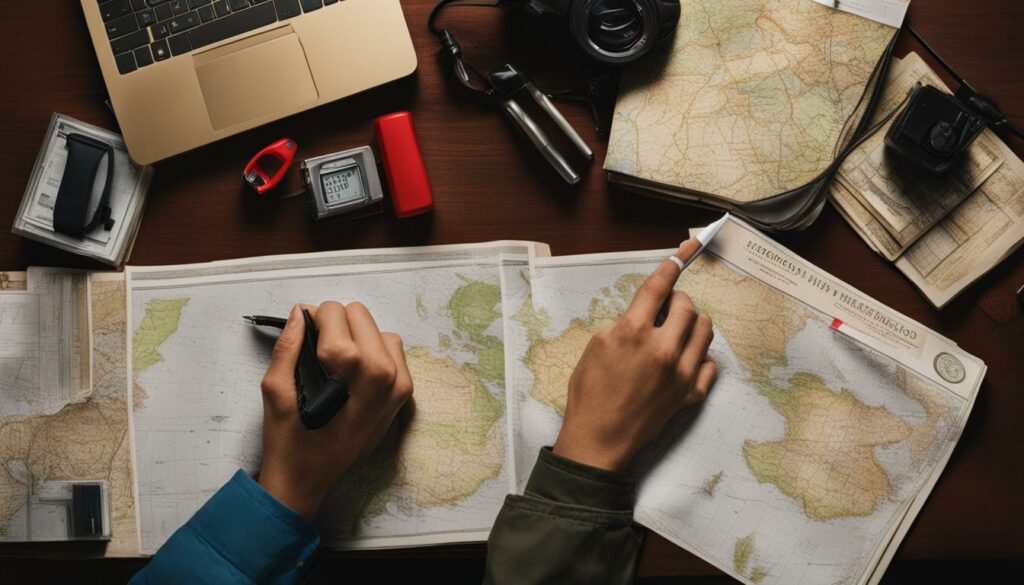
Table: Emergency Plan Checklist
| Components | Actions |
|---|---|
| Identify potential emergency scenarios | Research and understand the specific risks in your area |
| Create a list of emergency contact numbers | Include local authorities, emergency services, and healthcare providers |
| Gather emergency essentials | Include food, water, medication, clothing, blankets, flashlights, etc. |
| Establish meeting places | Determine safe locations for family members to reunite during an emergency |
| Plan evacuation routes | Create multiple routes and designate alternate means of transportation if necessary |
| Communicate the plan | Ensure all household members are aware of the plan and their responsibilities |
By starting with a well-thought-out emergency plan, you can lay a solid foundation for your preparedness efforts. Remember to regularly review and update your plan as needed to account for any changes in your contact information or circumstances. Being prepared can provide peace of mind and significantly increase your ability to navigate emergencies confidently.
Learn Basic First Aid
Basic first aid knowledge is an essential skill to have in emergency situations. Being able to provide immediate care can make a significant difference in preventing further injury or even saving a life. Here are some key first aid techniques to learn and practice:
Wound Dressing
Knowing how to properly dress a wound is crucial in preventing infection and promoting healing. Make sure to clean the wound with mild soap and water, apply an antiseptic, and cover it with sterile gauze or bandage. Remember to change the dressing regularly and watch for signs of infection such as redness, swelling, or discharge.
Bleeding Control
In cases of severe bleeding, it’s important to act quickly to control the bleeding. Apply direct pressure to the wound using a clean cloth or your hand, if possible. Elevate the injured limb to help reduce blood flow, and if necessary, use a tourniquet as a last resort. Seek medical help as soon as possible.
Heimlich Maneuver
The Heimlich Maneuver is a life-saving technique used to dislodge an object from a person’s airway when they are choking. It involves applying upward pressure on the person’s abdomen, just above the navel. By doing so, you can help clear their airway and restore normal breathing.
Broken Bone Stabilization
If you suspect someone has a broken bone, it’s important to immobilize the injured area to prevent further damage and reduce pain. Use a splint or any rigid material, such as a board or rolled-up newspaper, to support and stabilize the limb. Avoid moving the person unless absolutely necessary and seek medical assistance immediately.
CPR
Cardiopulmonary resuscitation (CPR) is a life-saving technique used to restore blood circulation and breathing in someone who is in cardiac arrest. CPR involves a combination of chest compressions and rescue breaths. Learning CPR can help you provide immediate assistance until medical professionals arrive.
By learning and practicing these basic first aid skills, you can be prepared to handle emergency situations with confidence and potentially save lives. Remember, it’s important to regularly refresh your skills and consider taking a first aid course to stay updated on the latest techniques.
| First Aid Skill | Description |
|---|---|
| Wound Dressing | Properly clean and dress wounds to prevent infection. |
| Bleeding Control | Apply direct pressure and use elevation or tourniquets to control bleeding. |
| Heimlich Maneuver | Dislodge an object from a choking person’s airway. |
| Broken Bone Stabilization | Immobilize a broken bone to prevent further damage. |
| CPR | Restore blood circulation and breathing in cardiac arrest cases. |
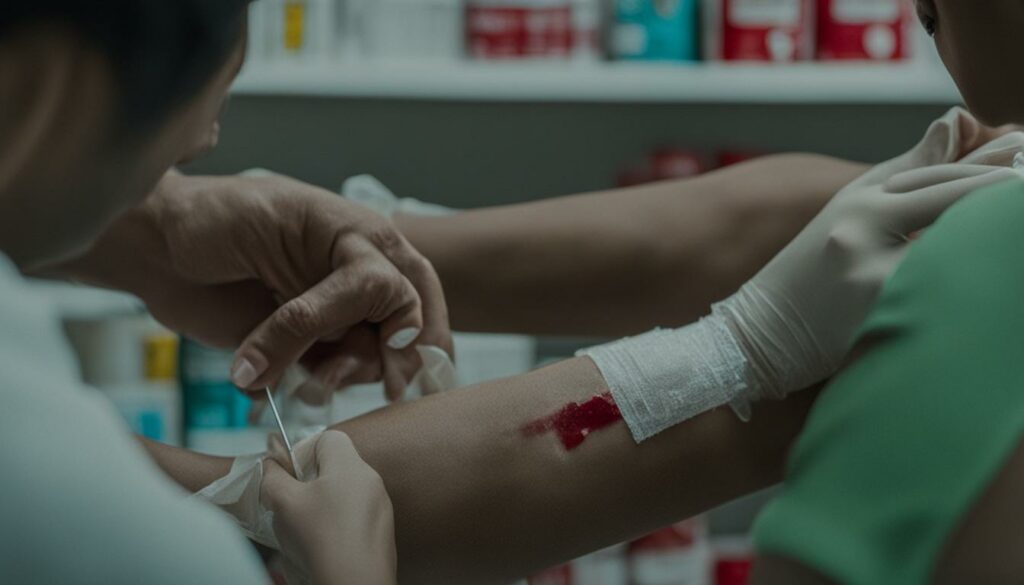
Acquire Essential Preparedness Skills
When it comes to emergency preparedness, having the right skills can be just as important as having the necessary supplies. In order to effectively handle challenging situations, it is crucial to acquire essential preparedness skills. By honing these skills, you will increase your chances of survival and be better equipped to help others in need.
One crucial skill to master is water treatment. In emergency situations, access to clean water may be limited, so knowing how to purify water is essential for your health and well-being. Additionally, learning how to signal for help can be a lifesaver in dire situations. Whether it’s using mirrors, whistles, or Morse Code, having the ability to communicate your location to rescuers is vital.
Another important skill to develop is fire building. Fire not only provides warmth and the ability to cook food, but it also serves as a signal for rescue. Understanding different fire-building techniques and gathering the necessary materials will greatly increase your chances of starting a fire when needed. Finally, mastering various survival skills, such as finding edible plants or constructing a shelter, will enhance your ability to sustain yourself in challenging environments.
| Skill | Description |
|---|---|
| Water Treatment | Learn various methods to purify water and make it safe for consumption. |
| Signaling for Help | Master techniques to signal for rescue, such as using mirrors, whistles, or Morse Code. |
| Fire Building | Understand different fire-building techniques and gather the necessary materials to start a fire. |
| Survival Skills | Develop essential survival skills, such as finding edible plants and constructing a shelter. |
By acquiring these essential preparedness skills, you will be better prepared to handle emergency situations and increase your chances of survival. Remember to practice these skills regularly to maintain proficiency and stay prepared for any crisis that may come your way.
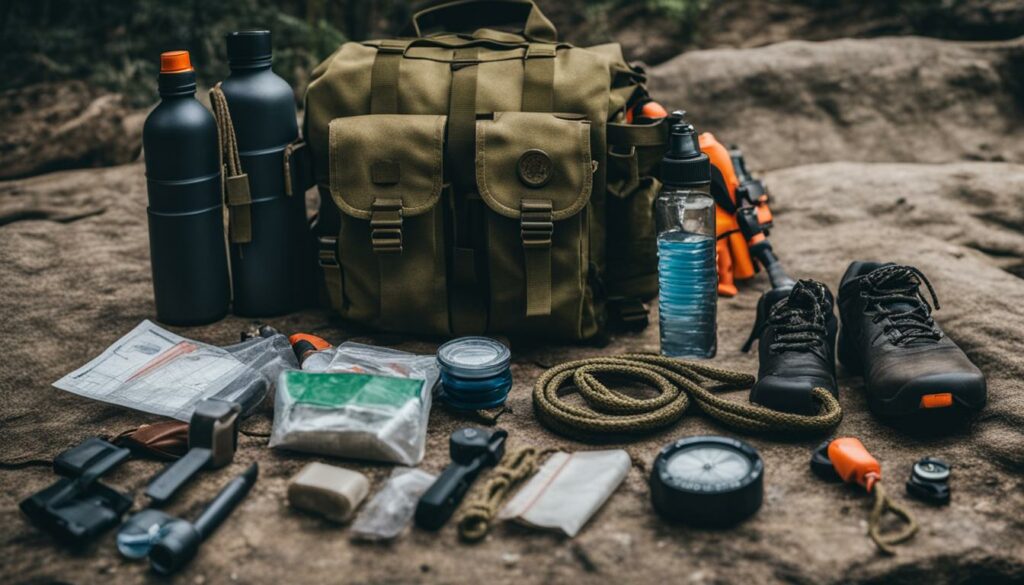
Plan for Disasters in Your Area
Disasters can strike at any time, and being prepared is crucial for your safety and the well-being of your loved ones. By understanding the specific hazards in your area, you can tailor your preparedness efforts to mitigate the risks effectively. Here are some key strategies to plan for different types of disasters:
Wildfire Preparation
If you live in an area prone to wildfires, take proactive measures to protect your home and surrounding property. Create a defensible space by clearing vegetation and debris, ensuring a safe distance between your home and potential fuel sources. Develop an evacuation plan and practice it with your family, ensuring everyone knows the safest routes to follow. Keep emergency supplies like fire extinguishers, blankets, and protective clothing readily accessible. Stay informed about fire conditions and follow the guidance of local authorities.
Hurricane Preparedness
Coastal regions are susceptible to hurricanes, and being prepared can save lives. Familiarize yourself with hurricane evacuation routes and shelters in your area. Secure your home by reinforcing windows and doors, and clear your yard of any loose objects that could become projectiles in high winds. Stock up on non-perishable food, water, medications, and essential supplies. Have a communication plan in place with your family, ensuring everyone knows how to stay connected during and after the storm.
Winter Storm Readiness
Cold climates bring the risk of winter storms, which can cause power outages, impassable roads, and extreme cold. Prepare by stocking up on sufficient food, water, and medication supplies to last several days. Keep your home well-insulated and have alternative heating sources, such as a generator or fireplace, in case of power failure. Dress in warm layers and have blankets and extra clothing available. Stay informed about weather forecasts and follow any advisories or warnings issued by local authorities.
Tornado Safety
Tornadoes can occur in various regions, and being prepared can mean the difference between life and death. Designate a safe area within your home, such as a basement or storm cellar, where your family can seek shelter during a tornado. Keep emergency supplies, including a battery-powered weather radio, in your safe area. Practice tornado drills with your family to ensure everyone knows what to do in an emergency. Stay informed about tornado watches and warnings, and heed the guidance of local authorities.
Earthquake Response
Earthquakes can happen unexpectedly, and proper response is crucial to minimize the impact. Secure heavy furniture and appliances to prevent them from toppling during an earthquake. Identify safe spots in each room, such as under sturdy tables or against interior walls, where you can take cover. Create an emergency kit with essentials like food, water, first aid supplies, and a flashlight. Educate yourself and your family on the appropriate actions to take during an earthquake, such as dropping to the ground, taking cover, and holding on until the shaking stops.
Flood Prevention
Living in flood-prone areas requires proactive measures to protect yourself and your property. Stay informed about flood alerts and warnings in your area, and heed evacuation orders if necessary. Prepare your home by sealing basement walls and installing a sump pump. Elevate valuable belongings and electrical systems to minimize damage. Create a flood emergency kit with essential supplies, including waterproof containers for important documents. Know the safest routes to higher ground and have a communication plan in place with your family.
By focusing on disaster planning and preparedness, you can significantly reduce the impact of emergencies and increase your chances of safety and survival. Take the time to understand the specific risks in your area and implement appropriate strategies to protect yourself and your loved ones. Remember, preparedness is an ongoing process, so stay informed, practice response procedures, and update your plans as needed. Your proactive efforts today can make all the difference tomorrow.

Be Prepared Away from Home
Emergencies can happen when you are away from home, so it is essential to be prepared in those situations as well. Whether you are on a road trip or traveling to a different city, having the right supplies and knowledge can make all the difference. Here are some tips for travel preparedness and creating a car emergency kit:
- Stock up on essentials: Pack your car emergency kit with items such as non-perishable food, water, blankets or sleeping bags, flashlights, extra batteries, a first aid kit, and a portable phone charger. These supplies will come in handy if you find yourself stranded or in need of assistance.
- Stay connected: Make sure to have a fully charged cell phone and a car charger. It’s also a good idea to keep a backup power bank in your emergency kit. Having a reliable means of communication can help you stay connected with loved ones or call for help if needed.
- Prepare for the unexpected: Consider adding additional items to your car emergency kit based on the specific challenges you might encounter during your travels. For example, if you are traveling during the winter, include items like an ice scraper, a snow shovel, and warm clothing.
- Keep important documents handy: Have copies of your identification, insurance information, and any necessary travel documents in a waterproof bag or container in your car. These documents can be crucial in case of an emergency or if you need to provide information to authorities.
| Essential Items for Your Car Emergency Kit | Quantity |
|---|---|
| Non-perishable food | At least 3 days’ worth |
| Water | 1 gallon per person per day |
| Blankets or sleeping bags | 1 per person |
| Flashlights | 2 or more |
| Extra batteries | For all electronic devices |
| First aid kit | With essential supplies |
| Portable phone charger | 1 or more |
Remember, emergencies can happen when you least expect them. By being prepared away from home, you can stay safe and handle unexpected situations with confidence.
Traveling can be an exciting adventure, but it’s essential to prioritize your safety and preparedness. By taking the time to gather emergency supplies, create a car emergency kit, and follow these tips, you’ll be well-equipped to handle emergencies while on the road or in unfamiliar places. Stay vigilant, stay prepared, and enjoy your travels with peace of mind.

Explore Books for Emergency Preparedness
Books can be valuable resources for enhancing your knowledge and skills in emergency preparedness. Whether you are a beginner or an experienced prepper, there is a wide range of books available on various topics related to emergency preparedness. These books cover survival techniques, self-sufficiency, first aid, outdoor skills, and disaster management, providing expert advice and practical guidance from professionals in the field.
By investing in these books, you can gain valuable insights and learn essential strategies to navigate through different emergency situations. They can help you develop the necessary skills to handle crises, become self-reliant, and protect yourself and your loved ones.
“Knowledge is power. By educating yourself through books, you can become better prepared, confident, and capable of handling various emergency situations.”
Books on Survival Techniques
If you are looking to enhance your survival skills, there are numerous books available that cover a wide range of topics. These books can teach you how to forage for food, build shelters, navigate without a compass, and handle extreme weather conditions. They provide practical tips and tricks that can be applied in real-life situations, empowering you to survive in challenging environments.
Books on Self-Sufficiency
Self-sufficiency is a crucial aspect of emergency preparedness. Books on self-sufficiency guide you on how to live off the grid, grow your own food, and generate your own power. They offer valuable insights into sustainable living and provide step-by-step instructions for becoming less dependent on external resources.
Books on First Aid and Outdoor Skills
First aid and outdoor skills are essential for handling medical emergencies and navigating through outdoor environments. Books on first aid teach you how to perform CPR, treat injuries, and respond effectively to medical emergencies. Outdoor skills books provide guidance on camping, hiking, and other outdoor activities, ensuring you have the knowledge and skills to stay safe in the wilderness.
Books on Disaster Management
Disaster management books cover a broad range of topics related to emergency response and recovery. They offer insights into the principles of disaster management, effective communication strategies, and the coordination of resources during crises. These books provide essential information for individuals, organizations, and communities to effectively prepare for, respond to, and recover from disasters.
| Title | Author | Topic |
|---|---|---|
| Survival 101: Essential Skills for Wilderness Adventure | John Smith | Survival Techniques |
| Off the Grid: A Guide to Sustainable Living | Jane Miller | Self-Sufficiency |
| First Aid Handbook: Your Complete Guide to Emergency Care | Emily Thompson | First Aid |
| Outdoor Survival Skills: A Comprehensive Guide | Robert Johnson | Outdoor Skills |
| Disaster Management: Principles and Practices | David Wilson | Disaster Management |

By exploring these books and incorporating their teachings into your emergency preparedness efforts, you can significantly enhance your ability to handle and overcome various challenges. Remember, knowledge is power, and by educating yourself through books, you can become better prepared, confident, and capable of handling emergency situations.
Harness the Power of Baofeng Radios
Baofeng radios have revolutionized emergency communication, providing a reliable and efficient means of communication in times of crisis. These versatile handheld radios offer an extensive range and a multitude of features that make them an indispensable tool for emergency preparedness. Whether you are facing a natural disaster, a power outage, or any other emergency situation, Baofeng radios can help you stay connected and informed when other communication methods may be unavailable.
With Baofeng radios, you can establish communication networks with family members, neighbors, or emergency responders, ensuring effective coordination and support. These radios operate on various frequency bands, allowing for both short-range and long-range communication. By programming your Baofeng radio with the appropriate channels, you can access emergency frequencies, local weather updates, and even listen to emergency services’ transmissions.
To harness the full potential of Baofeng radios, it is essential to follow radio etiquette. This ensures efficient and respectful communication, preventing unnecessary interference and confusion. Remember to use clear and concise language, identify yourself and the person you are addressing, and avoid transmitting unnecessary or non-emergency messages. By adhering to proper radio etiquette, you can help maintain the integrity of communication networks and facilitate smooth information exchange during critical situations.
| Advantages of Baofeng Radios | Features of Baofeng Radios |
|---|---|
|
|
“Baofeng radios offer reliable and efficient communication in emergency situations, allowing individuals and communities to stay connected and informed. With their extensive range, versatile features, and adherence to radio etiquette, Baofeng radios have become an essential tool for effective emergency preparedness.” – Emergency Communication Expert
By harnessing the power of Baofeng radios, you can enhance your emergency preparedness efforts and ensure effective communication during times of crisis. From establishing communication networks to accessing emergency frequencies, Baofeng radios offer a reliable lifeline when it matters most. Invest in these powerful radios, familiarize yourself with their features and operation, and be ready to connect with others and receive essential information in any emergency situation.
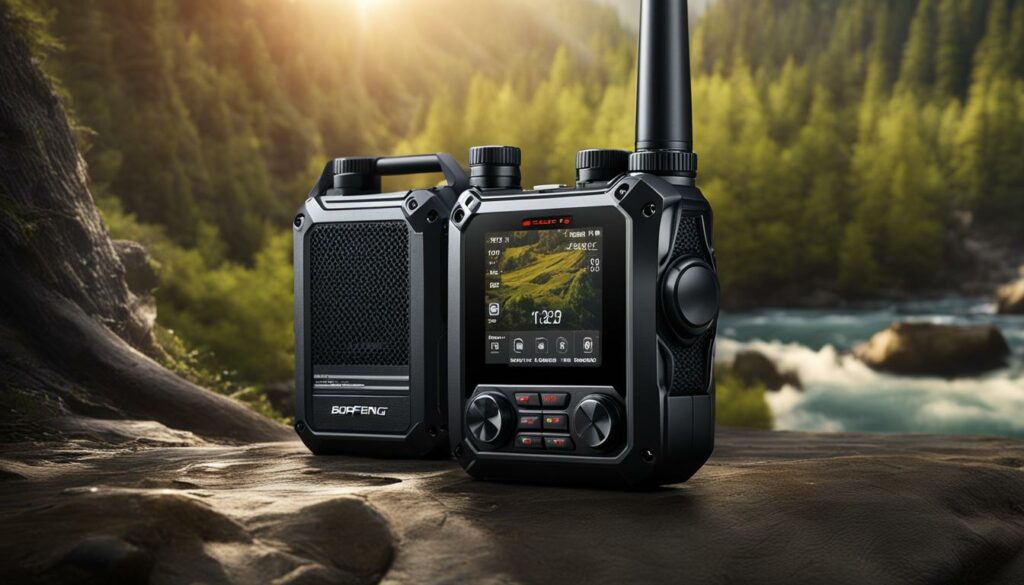
Conclusion
Emergency preparedness is an essential component in safeguarding the safety and well-being of both yourself and your loved ones. By following this comprehensive guide, you will gain the necessary skills, acquire the right tools, and learn invaluable tips to navigate through crises successfully. Taking proactive measures, such as creating a well-thought-out emergency plan and acquiring essential skills and supplies, will significantly enhance your preparedness efforts.
Remember that emergency preparedness is an ongoing process. Stay informed about potential disasters in your area and continue to educate yourself on the latest strategies and techniques. By doing so, you can adapt your plans as needed and ensure that you are well-prepared to handle any crisis that may arise.
By prioritizing emergency preparedness, you become the hero in any crisis. Your proactive approach empowers you to protect yourself and your loved ones, ensuring their safety and well-being in times of uncertainty. With thorough preparedness and crisis management, you can navigate through any emergency with confidence and peace of mind.
How Can Emergency Preparedness Skills Help with Stealth Camping?
When it comes to stealth camping, having emergency preparedness skills can make a world of difference. One of the best stealth camping tips is to always be prepared for the unexpected. Knowing basic first-aid, how to navigate using natural landmarks, and having emergency supplies can greatly improve your safety and comfort while stealth camping.
FAQ
What is emergency preparedness?
Emergency preparedness refers to the proactive measures taken to ensure the safety and well-being of individuals and their loved ones during a crisis or disaster. It involves creating an emergency plan, gathering necessary supplies, and acquiring essential skills to effectively respond to emergencies.
Why is emergency preparedness important?
Emergency preparedness is important because it helps individuals and communities minimize the potential negative impact of disasters. Being prepared allows for a faster and more efficient response, increases the chances of survival, and reduces the overall vulnerability during times of crisis.
How can I create an emergency plan?
To create an emergency plan, you should consider important details such as meeting places, contact information, and what to take with you in an emergency. It is crucial to keep your plan up to date and include any changes to phone numbers or addresses.
What should be included in an emergency kit?
An emergency kit should include essentials such as water, food, temperature control items, lighting sources, power alternatives, communication tools, and a fully stocked first aid kit.
Why is first aid knowledge important in emergency situations?
First aid knowledge can be life-saving in emergency situations. Knowing how to dress wounds, stop bleeding, perform the Heimlich Maneuver, stabilize broken bones, and perform CPR can make a significant difference in providing immediate care and increasing the chances of survival.
What are essential preparedness skills?
Essential preparedness skills include treating water in emergency situations, signaling for help using tools like mirrors or Morse Code, mastering fire-building techniques, and acquiring various survival skills.
How can I plan for disasters in my area?
To plan for disasters in your area, you should identify potential threats such as wildfires, hurricanes, winter storms, tornadoes, earthquakes, or floods. Research and implement specific strategies and precautions tailored to address these hazards.
How can I be prepared away from home?
Be prepared away from home by packing a car emergency kit with essentials like food, water, light sources, blankets, and communication devices. Additionally, when traveling, ensure you have emergency supplies and knowledge to handle unexpected situations.
What books can help enhance my knowledge in emergency preparedness?
There is a wide range of books available on topics such as survival techniques, self-sufficiency, first aid, outdoor skills, and disaster management. These books offer expert advice and practical guidance to help you become better prepared and self-reliant.
How can I maximize the functionality of Baofeng radios in emergency situations?
To maximize the functionality of Baofeng radios, learn how to program and troubleshoot them. Acquire the skills to effectively transmit and receive critical information, understand radio etiquette, explore frequency bands, and optimize your radio’s performance and range.


